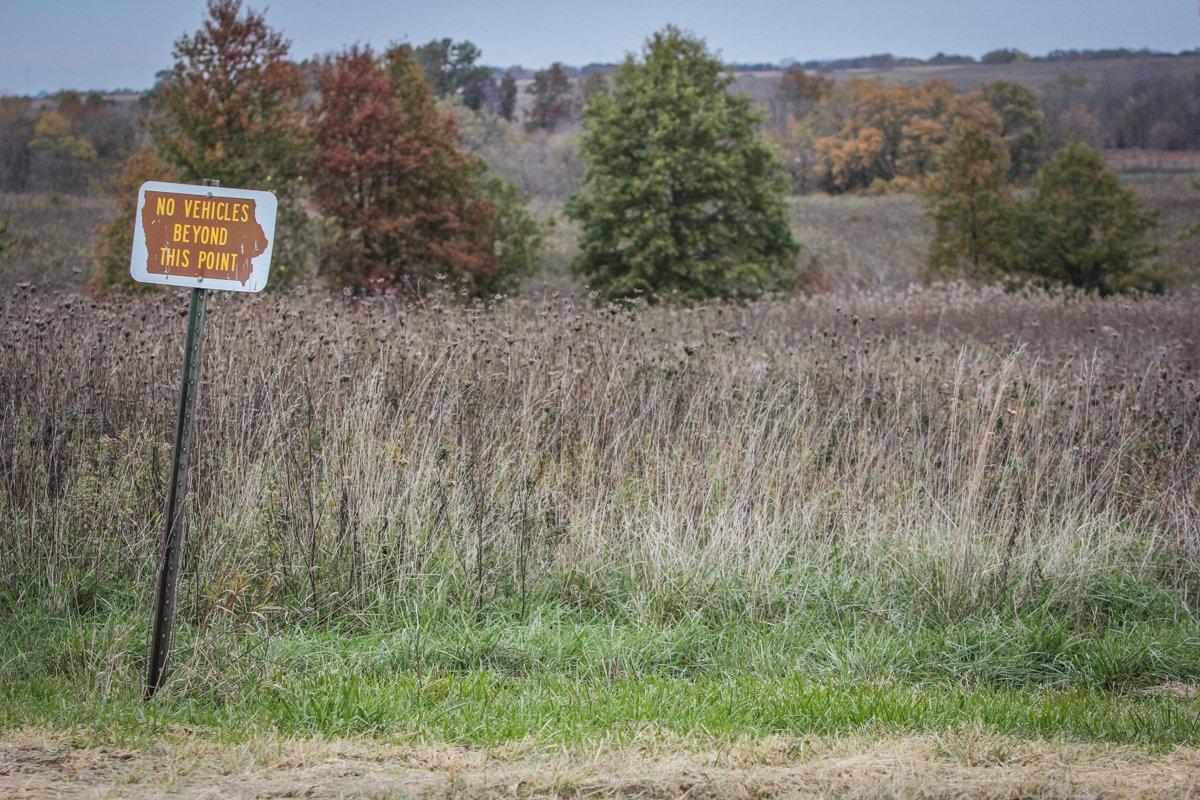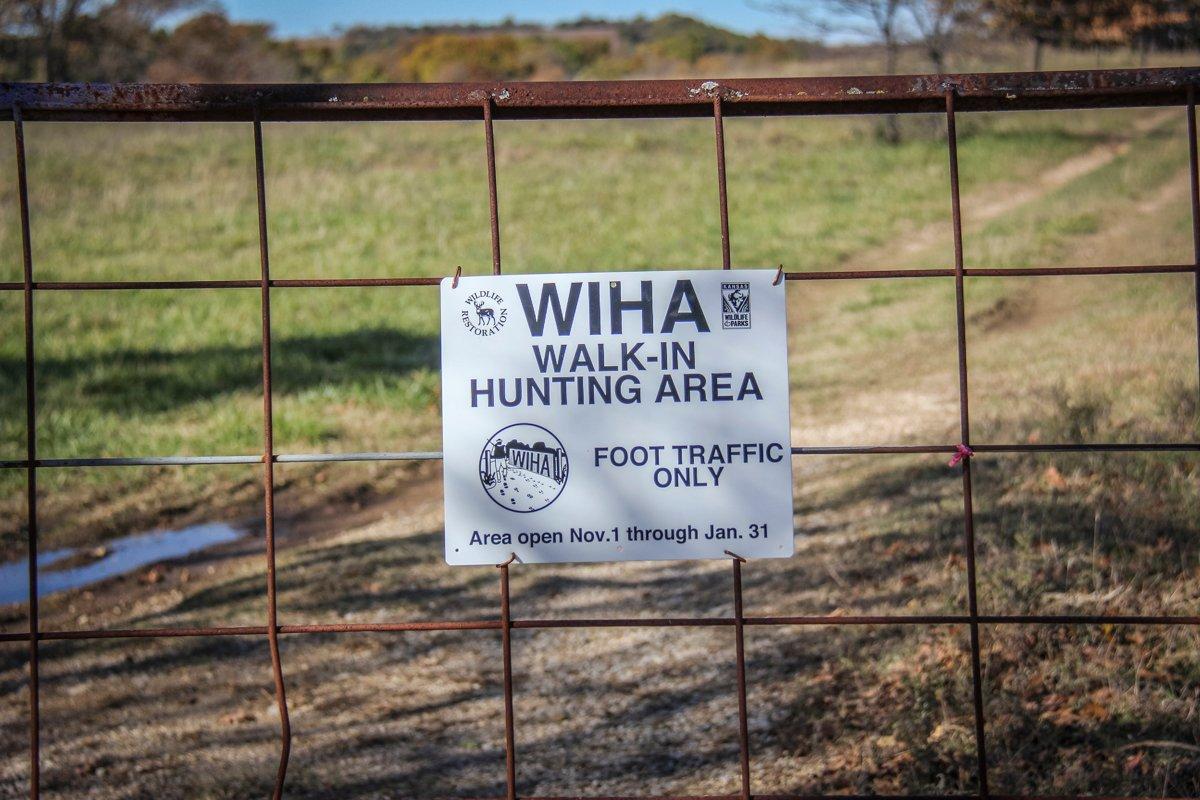It's harder than ever to find a place to hunt, but knowing where to look could reveal some fantastic, hidden places close to home
I have seen a lot of changes in the 45 years that I've been bowhunting for whitetails, but without question the most alarming is the increased difficulty in finding a place to hunt. When I was starting out in the 1970s, I could knock on the door of most any farmhouse and easily gain permission to hunt deer. Those days are as much history as the phone booth.
By the 1990s it was getting harder to find a place to hunt for free. The advent of outdoor television brought publicity to the amazing whitetail hunting of the Midwest, and with it the corresponding hordes of trophy seekers. Soon land was being bought and leased purely for deer hunting. Outfitters sprang up, and the average guy looking for a place to hang a treestand on the neighbor's farm was shut out.
If we are going to continue to have robust hunting and hunting advocacy, we need places for people to hunt. In short, we need public hunting land and lots of it.
Part of the problem with finding a place to hunt is knowing where to look. I'm here to help with that. There are overlooked lands open to public hunting all across the country, and many of them are largely unknown. I'll give you the basics here, and then it's up to you to dig around in the state you want to hunt to find these areas for yourself.
State Lands
State wildlife management areas are the most obvious public hunting lands in most states. These are mostly paid for by hunters' dollars, usually by way of a habitat stamp of some sort (each state's program is a little different). They are typically well posted with signs and can receive quite a bit of hunting pressure. When people talk of public-land hunting, these state-owned areas are the properties that often come to mind.
There are state hunting lands that are almost entirely overlooked, too. For example, Wisconsin has a program called Managed Forest Land. Landowners may enroll their land in this program in order to receive state help with management but in exchange, they are required to open it up to hunters. Other states have similar programs and because they are not well publicized, and often not signed, they get little to no hunting pressure. Check your state's website to learn more about these types of programs.
Don't Miss: 5 Overlooked Public Land Deer Hunting Hotspots
City and County Lands
Many county conservation boards own land that is open to the public. Depending on the county, these may be well publicized or almost entirely unknown. Some counties will have a list on their website; some will even have a map. Others don't publicize them at all, so you'll have to mine for information. A trip to the county conservation board office might turn up a property to hunt. Typically, these properties are well managed for wildlife - sometimes even with food plots - and can offer excellent hunting.
Counties often repossess lands with owed back taxes. This is especially true in areas of marginally productive farms. Eighty to 100 years ago, many families tried to carve a living out of the land, but couldn't make it. These tax forfeit lands reverted back to the counties and are now publicly owned. These are often 320 acres or more and can be found by looking at a plat book. In most states, they are open to hunting unless posted otherwise. Some counties in Minnesota where I live have more than 10,000 acres of such properties.
City governments often open areas to public hunting, too, particularly when deer damage complaints become a problem. These areas may include parks or other undeveloped areas that harbor a lot of deer - and sometimes some outstanding trophies. In most cases these are opened in a drawing for licenses.
Don't Miss: 5 Steps to Finding the Perfect Public-Land Deer Hunting Hot Spot
Private Land with Public Access
Walk-in hunting is becoming a buzzword among hunters in the know. Many states have taken aggressive steps to provide access for hunters. Over the past two decades the number of state programs that encourage private landowners to open their properties to public hunting has exploded. More than 20 states now offer these programs. They have various names such as North Dakota's Private Land Open to Sportsmen (PLOTS), Montana's Block Management Areas (BMA), Kansas Walk in Hunting Access (WIHA), and many others.
The eastern states have just recently been getting on this bandwagon, with Georgia leading the way. Georgia's Voluntary Public Access (VPA) program offers about 20 properties ranging in size from fewer than 100 acres to more than 1,600 acres.
The states that have these walk-in programs have been quite aggressive at promoting them, and most have online and printed maps detailing where the public hunting is found. Be aware that most of these properties, especially west of the Mississippi River, are composed of habitat most conducive to upland bird hunting, but there are fantastic pockets of overlooked deer hunting available to the person who is willing to spend the time digging them out.
Another overlooked private land open to public hunting opportunity can be found in lands owned by timber companies. Most large timber companies own millions of acres of land. Because the cost of patrolling them would be astronomical, they do not try to control access to them. The ground basically becomes public hunting land unless it is leased for hunting. Generally, if it's not posted, it's fair game. The quality of hunting can vary depending on when they are logged and what private properties are adjacent to them. As a general rule, they are best when they've been logged within the past 12 years, and if they border farmland. But that's not to say that any property can't offer excellent deer hunting.
Don't Miss: 8 Reasons to Hate Public-Land Deer Hunting
Federal Land
The U.S. Army Corps of Engineers (ACOE) owns millions of acres of land, some in just about every state. Most of the land surrounds major reservoirs and large navigable rivers. Some of it is broken up into parks, campgrounds and off-limits areas, but there are gigantic areas of public hunting available. There are some really big bucks coming from ACOE land every year in many states, too.
ACOE lands are generally well-signed, and it's not hard to find maps of the public hunting areas just by visiting the nearby office for printouts or going online for aerial photography with the borders of the public lands outlined. Walk into an ACOE office and ask about hunting, and usually you'll walk out with a handful of informative materials and occasionally some good advice from the people who work there.
Hunters who have the ambition to do a little something extra can reach back into areas that get little hunting pressure. Doing so might put you smack dab in the middle of amazing deer hunting. One hunter I know got permission to drive across private land to access some ACOE property, and he has killed several bucks over 150 for his initiative. Others use boats to cruise the shorelines of reservoirs, reaching areas where they seldom see another deer hunter. ACOE hunting lands are often large and tough to access, but that can make them ideal for growing trophy bucks.
In the western states, Bureau of Land Management (BLM) properties offer huge areas of hunting open to everyone. Much of this federally-owned land is wide-open country or mountainous, and not necessarily great whitetail habitat. But green river-bottoms intersect many BLM properties. Whitetails are found along these rivers, and they often go un-hunted in areas where hunters are focusing on elk and mule deer.
There are 245 million acres of BLM land in the U.S. today. That's more public hunting land than you could explore in a dozen lifetimes, so you'll need to pick through it and find what you're looking for. Use BLM land maps coupled with aerial photography, such as you'll find on Google Earth or the various mapping app programs such as onX Hunt maps and ScoutLook, to zero in on likely places.
In a final federal opportunity, keep in mind that several U.S. Military bases offer limited hunting opportunities. I've hunted bases that were open to go and come as you please, with the exception of closure times for maneuvers. These times are usually posted at entry points. I learned to pay close attention to these closures because I didn't want to leave a treestand in an open area only to find that the block I was hunting would be closed for two weeks, keeping me from retrieving my stand. It wouldn't have been much of a problem except that I was hunting 800 miles from home and only planning to stay one week. Live and learn.
In every base I have hunted, I was required to sign in and out at an entry point each day. Other bases have a limited entry drawing. Most all that I have been involved with will require a short orientation; some add a proficiency test for bowhunters.
Don't despair if you're having trouble finding a place to hunt, because you may not have been looking in the right places. Spend some time researching some of these options, and you just may find your own honey hole.
Don't Miss: 10 Steps for Scouting and Hunting New Pieces of Public Land
Check out more stories, videos and educational how-to's on deer hunting.












